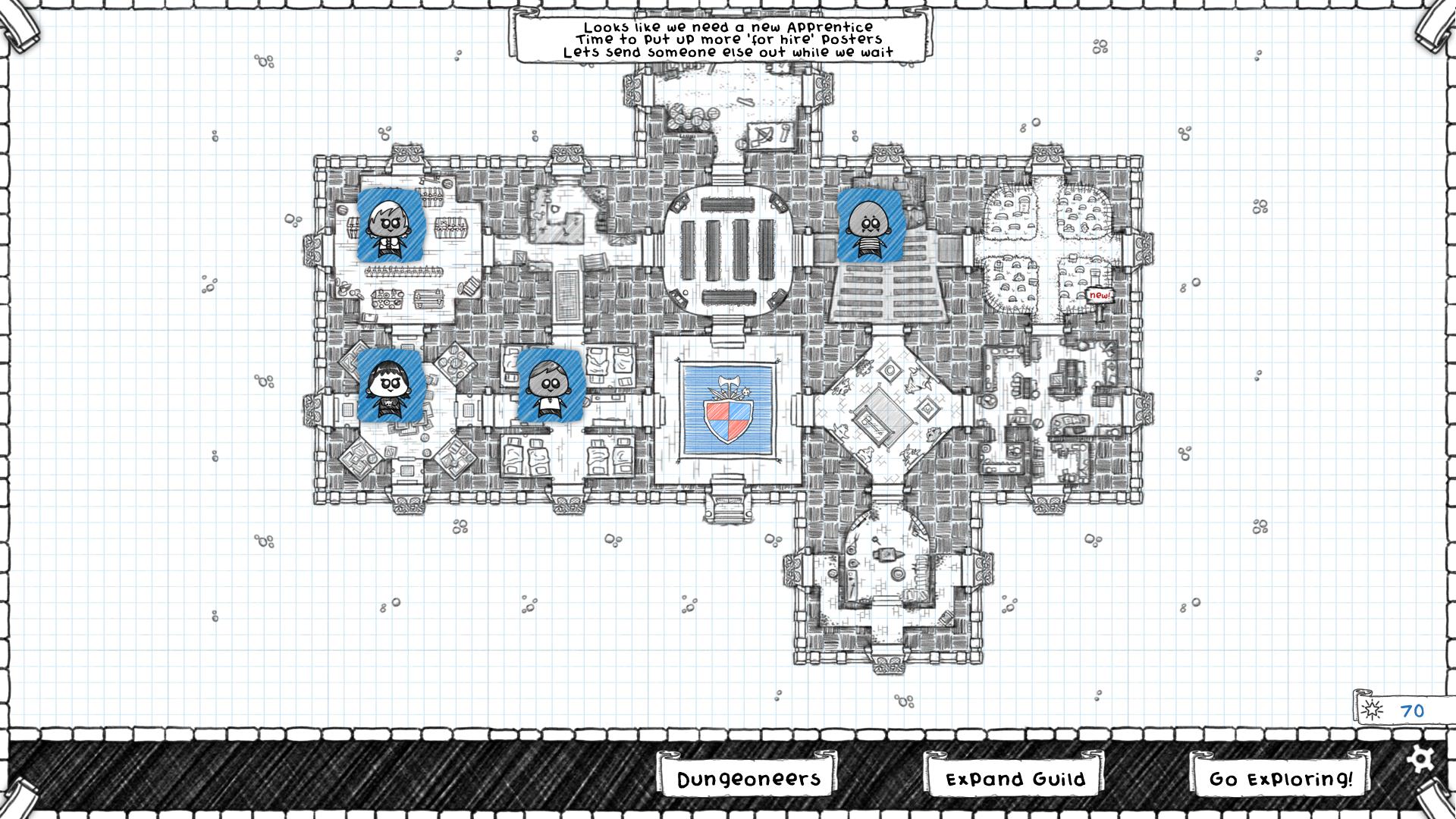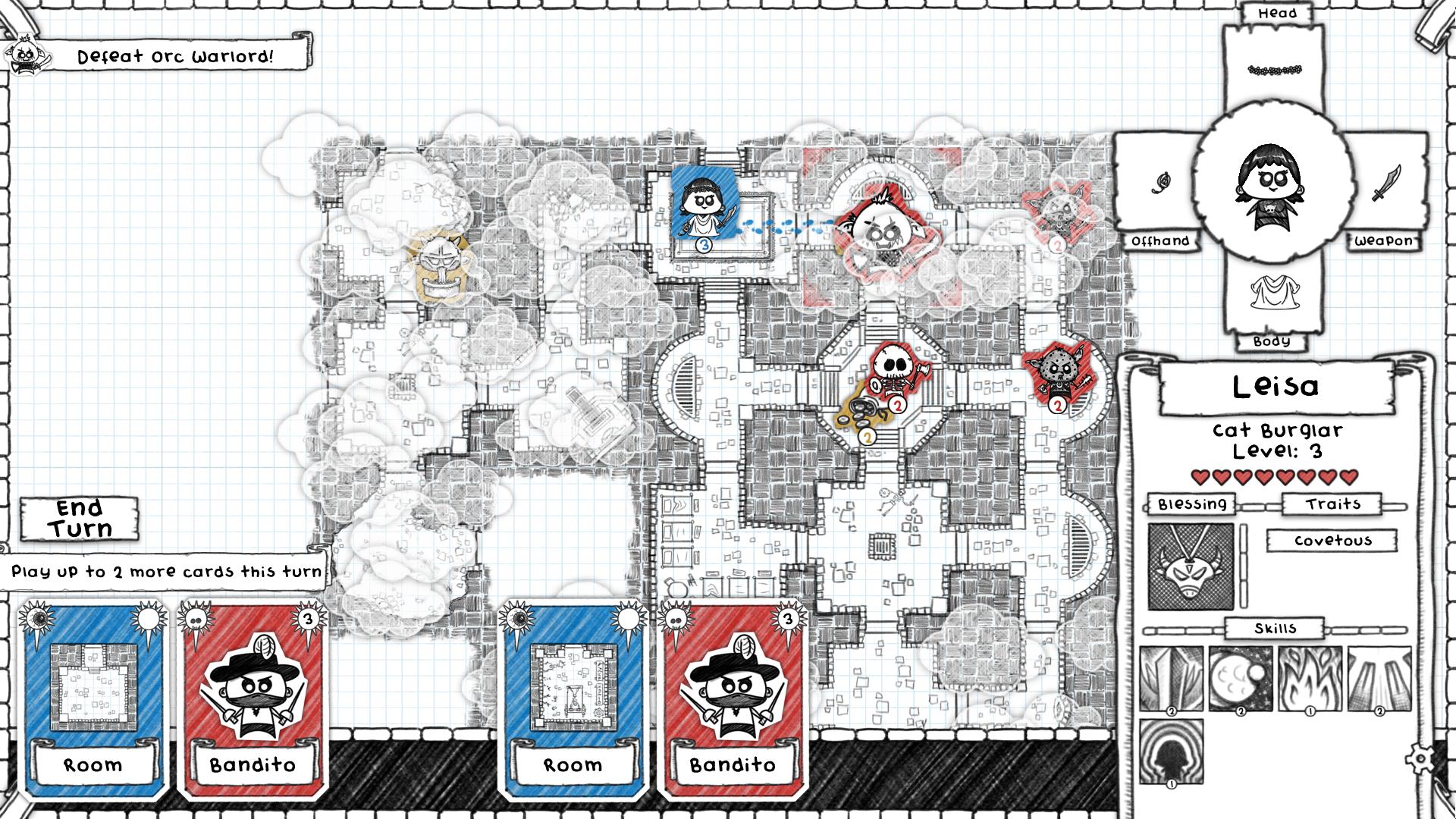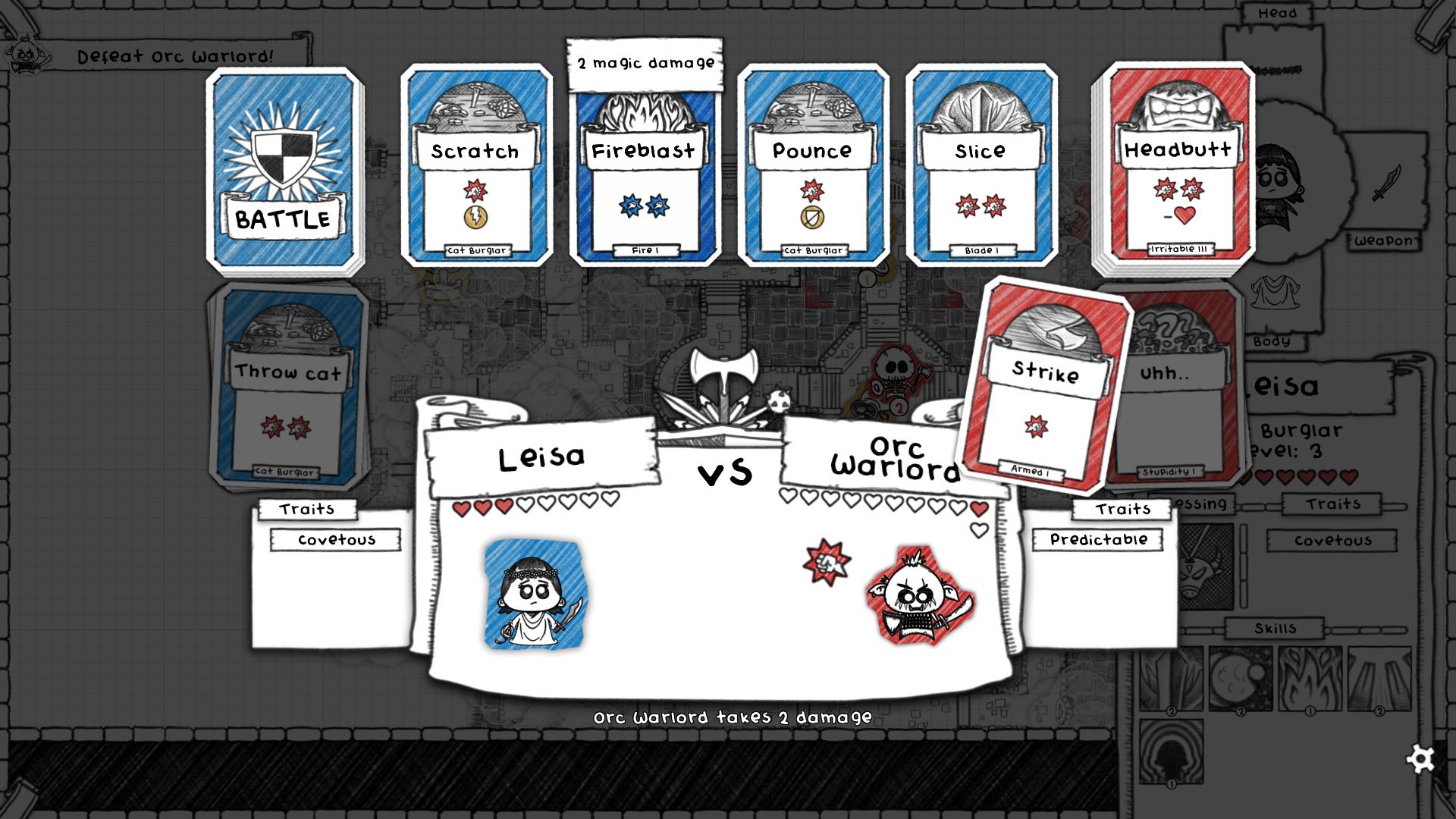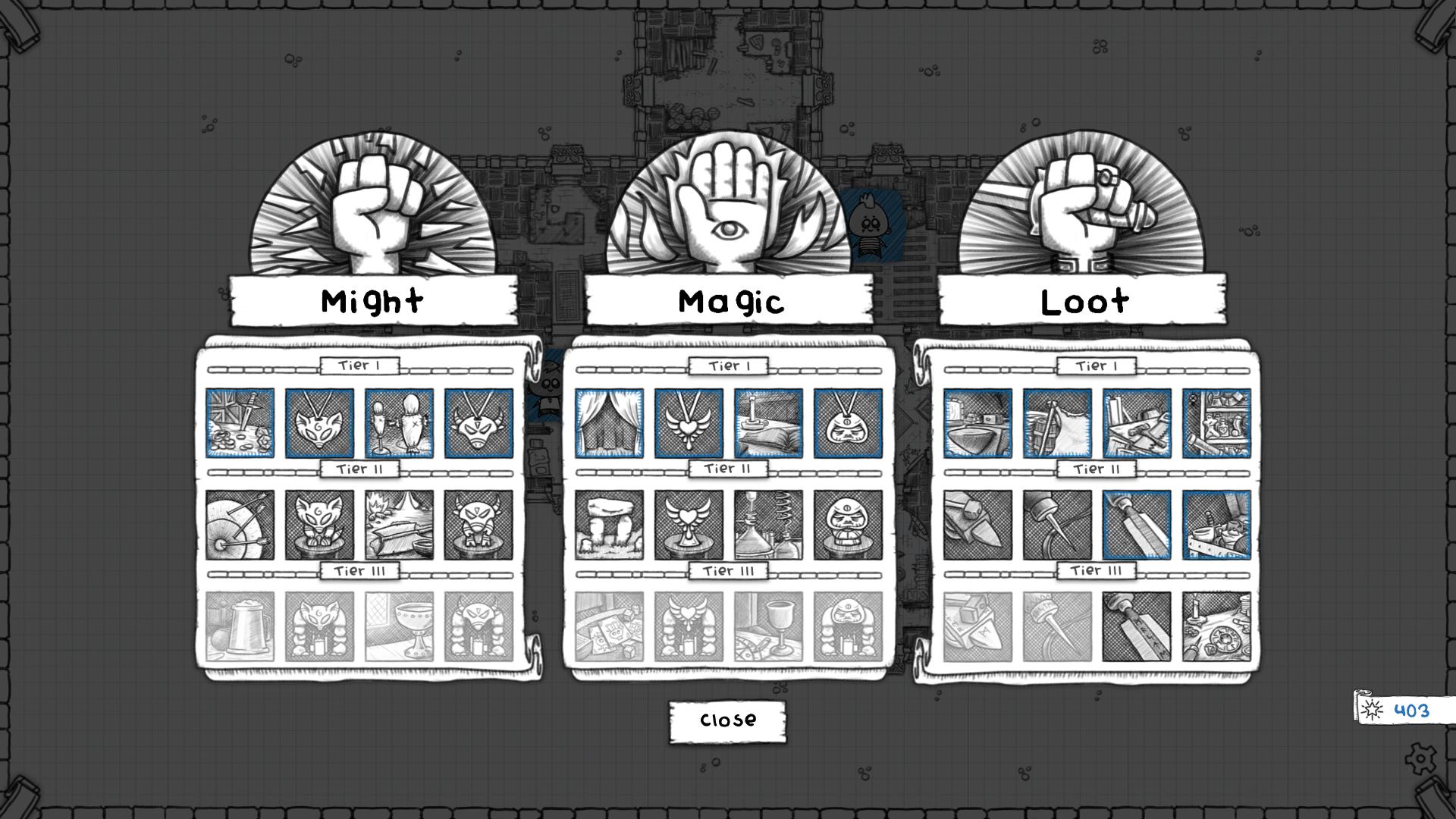
I’m usually a little wary of games that advertise the soundtrack as something you can buy separately. It’s just usually not going to be that memorable… but the songs that sing the tale of your triumphs or, more likely, your defeats, are so hilarious that it might just be worth it to be able to play one of them in a real life D&D adventure….
Like “Cardhunter” before it, Guild of Dungeoneering brings a paper-and-pencil roleplaying aesthetic to an overstuffed world of RPGs. But instead of controlling heroes exploring a dungeon, here you build a dungeon through which heroes (and I use the term loosely) search for loot, fame, and early graves.

You are the unseen architect of the Guild of Dungeoneering, a small affair out in the back country that hires itinerant heroes of various sorts to go sweep the floors, prune the garden, and defeat vile evil. As you expand the guild, you can attract various new kinds of adventurers. You’ll probably quickly want to find someone more experienced than the adventurer who just happened to be snoozing beneath a nearby bush when you built the first dungeon room. That’s just a “Chump”, a melee-based character with abilities balanced between defense (“cowering”) and offense (“slapping blindly with closed eyes”).
You’ll soon have “Bruisers” (defense-focused football hooligans), “Apprentices” (magical offense), “Cat burglars” (melee offense and cat-related puns), and “Mimes” (card and deck manipulation abilities) clamoring their way into the guild. Don’t get too attached to them, however. Because dungeons are harsh places.

Each time an adventurer enters a dungeon, they start from scratch — level 1, no gear. Before them are sketched a couple of dungeon rooms in a largely empty map. There usually is a boss to be defeated, or some number of mobs to kill. Your job, as the unseen architect, is to draw a hand of cards from the “Hope” (treasure), “Seek” (dungeon rooms), and “Dread” (monster) decks, and play those to build out the dungeon in such a way that the adventurer will reach max level and become fully geared before they attack the boss (or meet some other objective).
Gear is good. Gear adds cards to the “play” deck that complement your adventurer’s innate abilities, or shore up class weaknesses. Usually a dungeon will be more geared to a certain kind of play — magical defense, for instance. And you forgot to bring your Apprentice. The correct gear can let your adventurer live to see another day (unless it’s a Mime. Mimes don’t get to see another day).
Having played Seek, Dread, and Hope cards, it’s up to the adventurer to decide for themselves what their best path through the dungeon might be. Some go seeking high level monsters to kill. Some will cross the entire dungeon to get a piece of loot. Some will refuse to EVER confront the boss!
They aren’t stupid, you know. Not all the time, anyway.

When your adventurer finally does decide that maybe they will attempt to hit something today, out come the battle decks. These decks are, as I mentioned, comprised of cards given to your class and cards from gear. Here, our cat burglar has added some magical damage and defense to her normal melee offense. She is facing an Orc Warlord, who is a melee offense class with a side focus in getting the player to discard cards from her hand. That can leave the adventurer with very few options — more cards is more choice is more power when the battle decks come out.
The monster goes first (unless they play a card with the “quick” ability), and they typically have more health and better cards. (There are “blessings” you can research that allow the adventurer an advantage in the first couple of dungeon fights. Don’t waste the blessings. It is possible to die on the very first level 1 monster fight if you aren’t paying attention).
However, if you’ve gotten your adventurer to max level fast enough, and gotten the max level gear, and chosen gear that complements your character’s abilities and guards against the dungeon mobs’ focus, you just might have a chance. Win, and your adventurer may earn a battle scar that gives them an additional trait for future fights. Lose, and, well, it’s to the grave for the adventurer, and another “help wanted” sign gets posted down at the tavern. Maybe this death will help the next adventurer.

Guild of Dungeoneering is a surprisingly addictive game. The dungeon runs take about fifteen minutes to play through, as most of them have rules that limit the amount of time you can spend before the boss just decides he has waited long enough. The game is hilariously written, the songs maddeningly catchy, and the hapless adventurers eminently replaceable.
Each dungeon initially seems insurmountable. But after a couple of dead adventurers, it’s clear what sort of abilities would work best and which class would survive the longest. The Bruiser is a bit of a cheat, with their special ability to do damage while completely shutting down the opponent, but every class has their advantages, and the Bruiser has their fair share of deaths. Sometimes the cards just don’t work the way you want them to work.
I bought this game during Steam’s winter sale….
